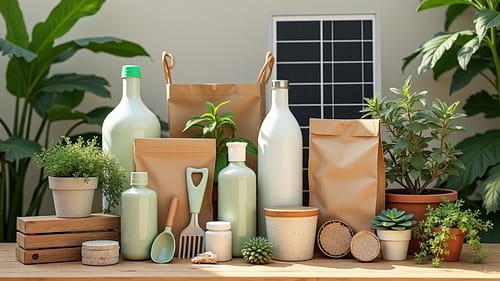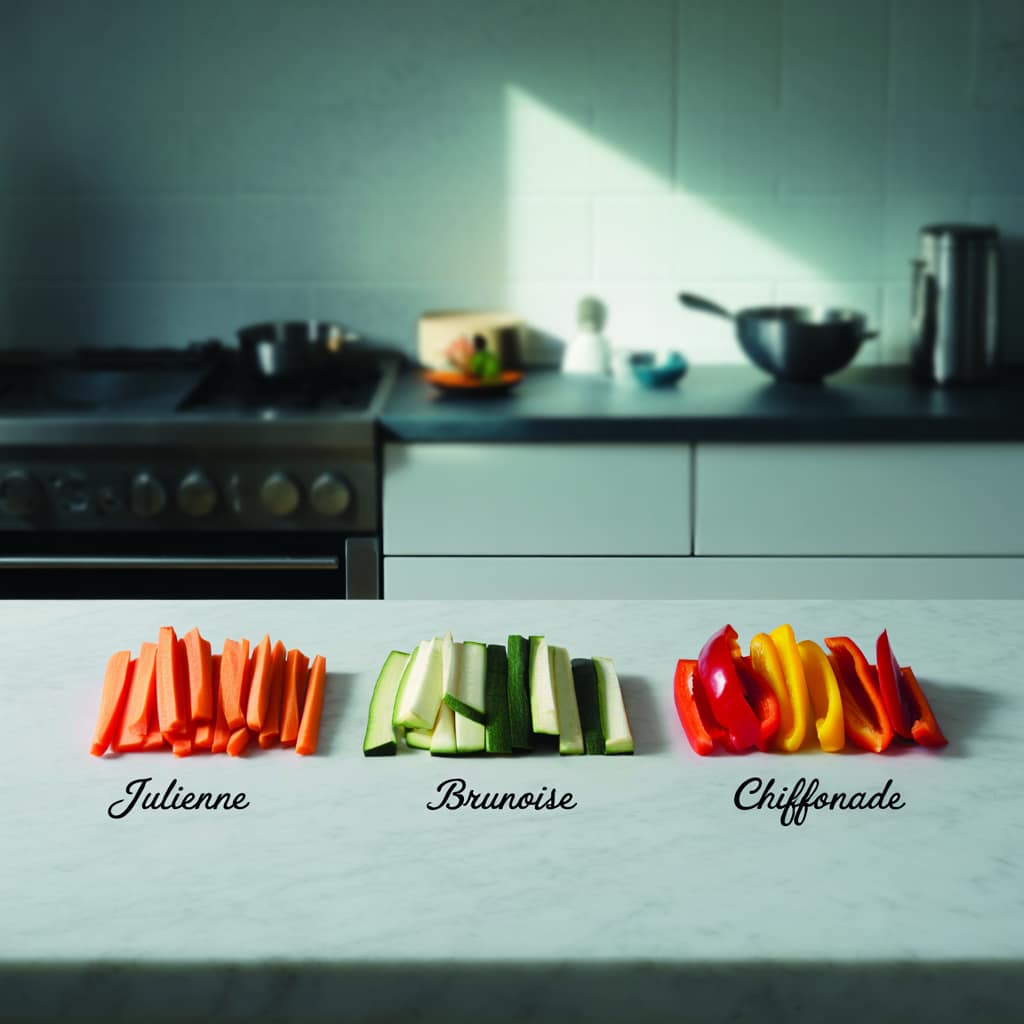The Latest In Eco-Friendly Products
Eco-conscious decisions are no longer reserved for a niche audience. Innovations across various industries make it easier for everyone to reduce their environmental impact. Whether you are looking for sustainable cleaning supplies, green tech, or even eco-friendly fashion, your choices matter. Embracing these alternatives not only benefits the planet but can lead to improved quality of life and long-term savings. As more people commit to these changes, communities are seeing a ripple of positive effects that make a genuine difference over time.
In this guide, we break down a wide array of topics to help you understand, choose, and incorporate eco-friendly products into your everyday life. Below, the sections cover everything from the kinds of products available to practical steps you can take on your own adventure toward a greener lifestyle. We have added further details and examples in each section to ensure you have an all-in-one resource that is both informative and engaging.
Eco-friendly products on Amazon
Step 1: Explore the Range of Eco-Friendly Products
The first step in embracing sustainable living is understanding what qualifies as eco-friendly. These products are designed to have minimal impact on the environment and typically use sustainable materials and processes during production. You might come across reusable items such as water bottles, shopping bags, and food containers, alongside energy-efficient appliances and clothing made from natural fibers.
To further illustrate, consider the practical benefits of each category. Home and kitchen items may include biodegradable cleaning supplies, reusable storage containers, and appliances that help lower your energy consumption. Personal care products are increasingly being made with natural ingredients, reducing the need for harsh chemicals. When picking technology products, look for gadgets powered by solar energy or designed with LED lighting to reduce energy usage. In fashion, products made from recycled fabrics or organic materials are gaining popularity as more consumers look to make responsible choices.
- Home and Kitchen: Biodegradable cleaning supplies, reusable storage options, and energy-saving appliances.
Biodegradable cleaning supplies On Amazon
reusable storage options on Amazon
- Personal Care: Natural beauty products, organic skincare, and plastic-free hygiene items.
plastic-free hygiene on Amazon
- Technology: Solar-powered gadgets, LED lighting, and energy-efficient electronics.
energy-efficient electronics on Amazon
Fashion: Clothing produced from organic fibers, recycled fabrics, and low-impact dyes.
organic finer clothes on Amazon
Outdoor and Gardening: Tools and accessories made from reclaimed materials, water-saving irrigation systems, and organic fertilizers.
water-saving irrigation systems on Amazon
Once you can identify these categories, the process of selecting eco-friendly items becomes more accessible. It allows you to match products with your lifestyle and sustainability goals. Taking a mindful look at these options can encourage you to mix in some variety while aligning your purchases with the long-term benefits of sustainable living.
Step 2: Define Your Sustainability Goals
Before shopping, it is very important to consider what sustainability means for you personally. Your priorities might vary greatly; some individuals focus on reducing plastic waste while others prefer lowering energy consumption or adopting an overall organic approach in everyday life. Reflecting on your values and needs helps you to set clear, manageable goals that guide your purchasing decisions.
Spend some time thinking about which areas of your lifestyle need a boost toward being more eco-friendly. Whether you are aiming to reduce household waste or minimize chemical use in personal care products, your goals can be as specific or as broad as you wish. Defining these targets not only gives you a clearer picture of your needs but also simplifies the process when you start comparing different products. Setting a clear intention is like laying out a roadmap for the sustainable boosts that you want to see in your life.
Questions to Ask Yourself:
- Do I want to reduce household waste?
- Is energy efficiency a key concern in my daily routine?
- Am I looking for products that are healthier for my family?
- Do I want to support companies with ethical practices?
Example Goals:
- Transition to reusable and compostable kitchen supplies.
- Invest in energy-efficient home appliances to lower utility bills.
- Switch to organic personal care items for a natural boost.
- Shop for clothing made from recycled or natural materials.
With clear priorities in place, you can effortlessly sort through a diverse market and pinpoint exactly which items resonate with your values. This approach makes your journey toward a greener lifestyle not only more manageable but also more rewarding as you see the impact of each conscious choice.
Step 3: Check for Certifications and Eco-Labels
It is essential to note that not every product labeled as eco-friendly lives up to its claim. To be sure that you are choosing a genuinely sustainable option, look for credible certifications that verify a product’s environmental impact. These certifications serve as a quick reference guide, shedding light on what standards the product meets and how seriously its producer takes environmental responsibility.
For example, Energy Star indicates that an appliance has been designed to reduce energy consumption, while USDA Organic certifies that a product is made without synthetic chemicals. Such labels are a great help in guiding your decisions without needing to do extensive research each time. Taking the time to read about these certifications can provide further insight into the product’s true sustainability credentials.
- Energy Star: Indicates energy efficiency in appliances and electronics.
- USDA Organic: Ensures the product is produced without synthetic chemicals.
- Fair Trade: Supports ethical labor practices and fair wages.
- Forest Stewardship Council (FSC): Confirms wood-based products come from responsibly managed forests.
- Green Seal: Certifies cleaning and other household products meet strict performance and environmental standards.
It is worth spending additional time to look over these labels, as they are essential in helping you decide. By understanding the meaning behind each certification, you are better equipped to choose products that match your environmental values and needs.
Step 4: Weigh Quality, Efficiency, and Cost Savings
Many eco-friendly products put a strong emphasis on durability and efficiency. Often, this means that you might face a higher upfront cost. However, these products are designed to last longer and use fewer resources, which can yield substantial savings over time. When weighing your options, consider not just the initial price but also how long the product will last and how much it can reduce your overall consumption.
Think about how investing in a high-quality eco-friendly appliance could reduce your energy bills in the long term, or how choosing reusable items might save you money on constantly buying disposables. The upfront expense can be well worth it when the product not only performs effectively but also contributes to reducing waste and lowering environmental impact.
- Longevity: Products made for sustainability are typically built to withstand the test of time.
- Efficiency: Whether it’s a smart thermostat or LED bulbs, look for items that reduce ongoing energy costs.
- Maintenance: Items that require less upkeep can lead to long-term savings both financially and environmentally.
Consider a scenario where you choose an energy-efficient appliance that uses less power and lasts much longer than its conventional counterpart. While the initial investment is slightly higher, the combination of reduced energy bills, fewer replacements, and less environmental stress makes it a really important decision for both your wallet and the planet.
Step 5: Prioritize Practicality and Everyday Use
Eco-friendly products need to integrate seamlessly into your daily routine. Regardless of how sustainable an item might be, it loses its benefit if it isn’t practical or user-friendly. The goal is to incorporate products that are not only green but are also convenient and effective in your everyday life.
Before making a purchase, consider how the new product will fit into your current habits. For instance, if you are thinking about swapping disposable kitchen items for reusable alternatives, make sure the new options are as easy to use, clean, and store as the old ones. Practicality is key for long-term adoption, as everyday use should include a balance of sustainability and convenience.
- How will this product integrate into my current routine?
- Is the eco-friendly alternative as effective as the more conventional option?
- Will switching make my life easier or add unnecessary complexity?
When a product is easy to use and helps simplify your routine, you are more likely to stick with it. Small improvements in how you manage everyday tasks can add up significantly, making your overall lifestyle more enjoyable while still benefiting the environment.
Step 6: Shop from Reputable and Transparent Brands
The integrity of a brand plays a big role in ensuring that eco-friendly products live up to their promises. Not all companies operate with the same level of commitment; therefore, it is really important to support those who are open about their production practices and sustainability goals. When a brand is transparent about how its products are made, you can trust that your purchase is making a real difference.
To identify reputable brands, take time to research the company’s background and read customer reviews. Look for detailed product information that explains material sourcing and ethical production practices. This research not only guides your purchasing decision but also supports businesses that are truly dedicated to fostering a healthier environment and community.
- Read detailed product information regarding material sourcing and production methods.
- Review third-party insights on both product performance and sustainability claims.
- Choose brands with strong records of environmental and ethical responsibility.
By backing companies that are committed to ethical practices, your spending becomes part of a larger movement toward responsible consumption and a more sustainable future for all.
Step 7: Stay Updated on Innovations and Share Your Experiences
The landscape of eco-friendly products is continuously evolving, with new innovations emerging almost every day. Staying informed about these advances can help you stumble upon better products and methods to further reduce your environmental footprint. Whether through trusted blogs, forums, or news sites dedicated to sustainable living, keeping up with the latest information ensures you are always in the loop.
It might also be very rewarding to share your own experiences. When you discuss how a product has made a positive impact on your life, you may inspire others to take similar steps. Small tips and success stories can encourage widespread changes and contribute to a community that is committed to making responsible choices.
- Follow reputable eco-friendly blogs and news outlets.
- Join community forums to exchange ideas and tips.
- Look out for new eco-labels and certifications emerging on the market.
By getting involved and sharing feedback, you help shape a more sustainable market and ensure that environmental innovations continue to receive the attention they deserve.
Common Questions & Troubleshooting
What if I can’t afford the eco-friendly alternative?
Eco-friendly products can sometimes come with a higher price tag, especially when compared to their conventional counterparts. Start by focusing on changes that will have the most significant impact. In many cases, the long-term savings outweigh the initial costs, making the investment worthwhile. Look out for discounts, consider bulk purchasing, or explore second-hand options that offer the same benefits without stressing your budget.
How do I know if a product is truly eco-friendly?
To determine if a product is genuinely eco-friendly, check for recognized certifications and eco-labels that back up its claims. Additionally, research the brand’s sustainability practices and dive into reviews on trusted platforms. This due diligence ensures that you are choosing options that are in line with your values.
What if I’m new to eco-friendly products?
Everyone starts somewhere, and it’s perfectly fine to begin with small incremental changes. You can start with one or two products such as reusable shopping bags or energy-saving light bulbs. Gradually exploring a wider range of eco-friendly options will help you ease into a sustainable lifestyle without feeling overwhelmed.
Final Thoughts & Next Steps
Switching to eco-friendly products is more than a fleeting trend; it signifies a lifestyle change that offers long-term benefits for your personal well-being as well as for the environment. By examining the wide variety of products available, setting clear sustainability goals, and taking informed, practical steps toward integrating greener alternatives into your life, you are making a decision that resonates on many levels.
Your action plan can begin with a single change. Perhaps start by focusing on one category, such as kitchen items or personal care products, and gradually expand your efforts. With every small adjustment, you contribute to a larger movement of environmental responsibility. It is all about making life a little easier, a little more thoughtful, and a lot more sustainable.
Your Action Plan:
- Begin with one product category, like eco-friendly kitchen or personal care items.
- Verify product information by reading labels and researching brand histories.
- Invest a bit more upfront if it ensures long-term savings and reduces waste.
- Share your experiences and findings with friends, family, or online communities to inspire responsible choices.
Small shifts in buying habits and everyday routines can accumulate quickly into significant positive change. What eco-friendly item will you choose next? Take the time to explore, set your own sustainable goals, and then take practical steps to incorporate those choices into your daily routine. Your efforts not only improve your quality of life but also encourage a wider community to make better, more conscious choices.
Wrapping up, remember that each step, no matter how small, plays a part in creating a cleaner, healthier planet. By staying involved, asking questions, and committing to gradual improvements, you help build a future where sustainability is woven into the fabric of everyday life. Bottom line: every eco-friendly choice you make is a win for you and for our planet.
Smart Shopper Guide GPT
Your dynamic, eco-conscious shopping assistant for personalized, sustainable choices.
Join a thriving community
Stay in the loop with everything you need to know
And build your own online presence!
-
The Latest In Eco-Friendly Products
-
Voice-Activated Shopping Is The Next Big Thing
-
6 Trending Fashion Accessories For This Season
-
Best Practices For Using Digital Coupons
Create your own website
And learn how to monetize it
Heads up! If you’re looking to join Wealthy Affiliate, make sure you sign up using my referral link to get access to my personal coaching and all WA features."










